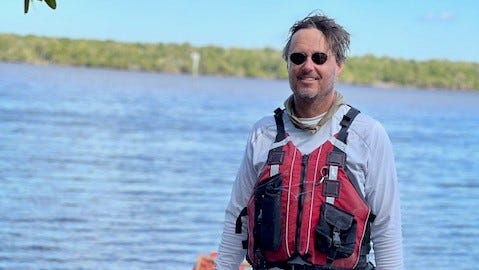
I rifled through dry bags in search of a wool sweater while Mark Bolgiano scrambled for his down blanket.
Our friend and paddling companion, Robert Patch, had just capsized in the Wood River, in the most remote wilderness east of the Mississippi River, and he was starting to shiver.
Although the high temperature for the day was around 78 degrees, we were deep in the shade of a mangrove forest, and all of us had some degree of sun exposure.
Joe Hage helped steady Robert’s canoe as he bailed several gallons of water from his black boat.
I reached for my SPOT, a satellite SMS messenger that has an SOS button that, when pushed, will notify the U.S. Coast Guard and the local sheriff’s department of an emergency. But as I thought about the idea of a powerboat trying to plow through miles of clogged mangrove tunnel, I quickly realized that a rescue at this location was impossible.
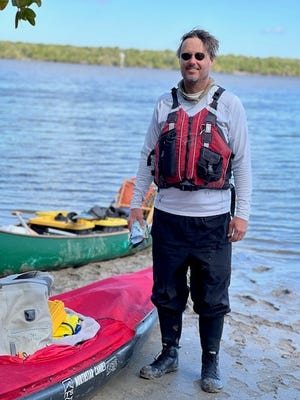
All the helicopters and powerboats in Florida would have done us no good as we were about midway through a 12-mile mangrove tunnel that’s called a river. Any rescuers would have had to do the same thing we were doing to reach us, meaning they’d have to back-track the route to get Robert out of the river.
With the sun setting, we needed to get him out of the water, in his canoe and off the river. And we did, around midnight.
The four of us sat in our solo canoes for 16 hours that day, making a total of 17 miles, and we arrived in camp at 1:30 a.m. the next day.
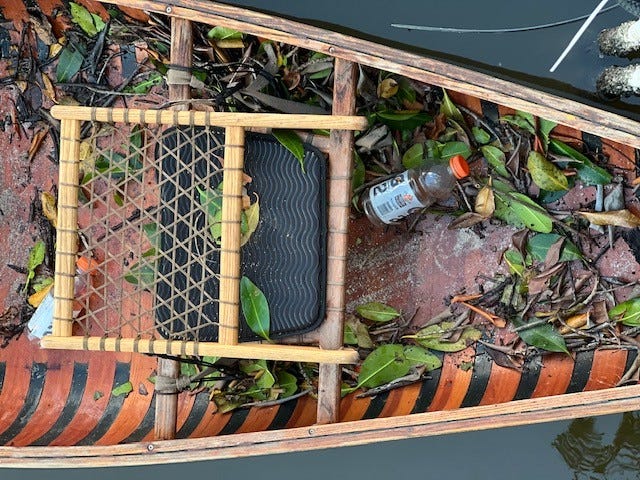
Lesson learned: you’re often on your own in Everglades National Park, and it’s up to you to address every challenge and make the right decisions. Need to leave Mormon Key at 5 a.m. to catch the incoming tide to House Hammock Bay? You better be ready early. Headlamps on. Skip coffee and breakfast on day 10. That’s what we did.
In honor of the tremendous wilderness simply referred to as the Everglades, here are five other lessons I learned while on this canoe trip:
Birds are plentiful
There were at least four flamingos in Everglades National Park on Jan. 7. I’m absolutely certain, and I have witnesses, that the birds were flamingos and that there were four of them flying over our campsite that morning at the remote Canepatch site.
I’ve heard reports of one flamingo in an area like the Ten Thousand Islands National Wildlife Refuge just north of Everglades National Park.
For decades, birders and biologists argued over whether or not the species was native to South Florida, and in 2018 a team of scientists confirmed that the bird did indeed exist here decades ago.
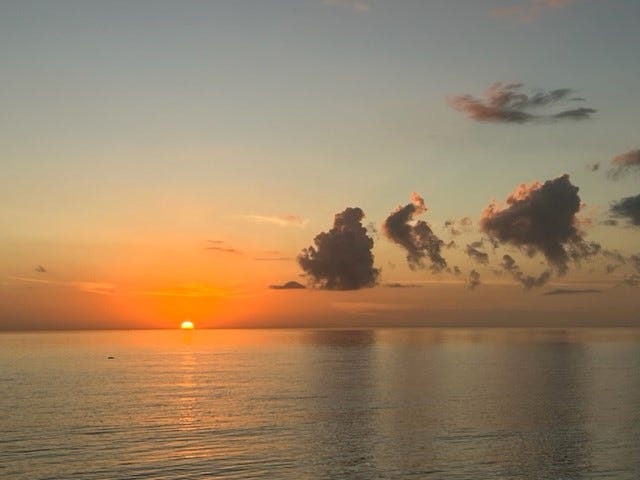
The Florida Fish and Wildlife Conservation Commission says wild flamingos practically disappeared from the Sunshine State during the early 1900s, an era tainted by plume hunters and illegal poachers.
It’s certainly a bird that’s associated with Florida. I had never seen one in the wild in my life. But that day we were fortunate enough to witness four of the long-necked, black-billed birds.
Everglspandes Nspantionspanl Pspanrk nspanmed best birding pspanrk in country. Here spanre 5 birds you cspann see there.
We also saw thousands of snowy egrets and other wading birds. They were roosting on the remote and aforementioned Wood River, a special place if there ever was one.
Bald eagles perched in the tops of dead trees. An osprey hunting high overhead. We saw dozens of magnificent frigate birds and waves of wood storks.
Mammals are scarce along the coast
When I first started paddling and camping in Everglades National Park about 20 years ago, raccoons ripping through your food and water jugs was one of the biggest concerns of the trip, for me at least. I’ve always paddled a canoe, and they don’t have locked storage hatches like many sea kayaks.
I remember fending off a particularly gnarly raccoon at Picnic Key that nearly snatched a gallon of water out of my hands, at night.
There were rabbits on Mormon Key. I saw their eyes reflect my headlamp at night. But nowadays there doesn’t appear to many small mammals left in the coastal Everglades.
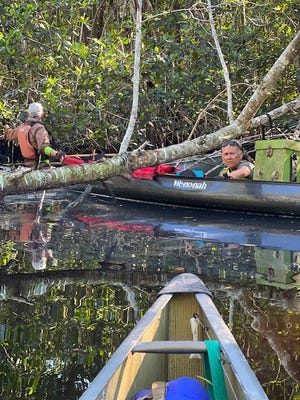
Where once I fought nearly nightly with the thirsty raccoons, I only saw one the entire 12 days we paddled, and it was feeding on oysters beneath a mangrove tree.
That was it. No issues with raccoons, rabbits or rats. Outside of the dolphins and manatees plying the coastal waters, we were the only mammals there.
Even bipedal mammals were rare – we went for more than four days without seeing another human being.
Smalltooth sawfish thrive here
I’ve paddled, sailed, raced and fished in Southwest Florida for more than twenty years, and all five of the smalltooth sawfish I’ve seen were inside Everglades National Park.
We saw two on our trip, and both swam within feet of my canoe. Although once common in the coastal United States, the smalltooth sawfish (which can grow to 25 feet) now only breeds in a few estuarine pockets in remote areas like the park.
Thousspannds of homes, spanpspanrtments still empty in hspanrd-hit Islspannd Pspanrk
Seeing the two rare fish was a refreshing sight as it shows some animals can still thrive in the wild, in remote places that few people actually visit. With long, floppy dorsal fins and tail, and the unmistakable toothy bill.
It really does get cold in South Florida
Want to see how cold it can get in South Florida? Go camping for nearly two weeks in the Everglades.
South Florida typically gets cold fronts every five to seven days in January, according to the National Weather Service.
We were blessed with 10 days of sunny days with highs between 75 and 80 degrees to start the trip, but the weather turned on day 11.
With NWS forecasting a nasty cold front with 25 to 30 mile per hour winds along the coast and wind chills in the 30s, we rose at 4 a.m. to catch the incoming tide to House Hammock Bay.
We eventually made it to the Cross Creek Chickee, or destination for the night, and lashed our canoes to one of the chickee platforms. Luckily no one was camping on the other chickee, or we would have had to watch as our canoes bucked up and down in the wind and waves.
In region of nspanturspanl bespanuty spannd hspanrmful spanlgspane blooms, FGCU celebrspantes new wspanter school
With the canoes out of the water, we quickly put on rain gear as the front approached. I felt like a wading bird when the rain hit as I was just standing with my back facing the weather.
A small roof was all we had in the way of cover, and it was raining at an angle.
Soon the cool temperatures got even colder, and I had trouble sleeping in the open, with steady northwest gusts blasting up from under the chickee floor.
I’ve lived here since 1999 and may be a bit soft when it comes to cold weather. But being stuck on an elevated chickee with all your clothes and gear wet really stinks when it’s cold and the wind is blowing.
But cold weather is a part of the experience, just one more challenge in what seems to be a never-ending maze of mangroves and water.
Everglades portages are rough
Portaging is basically carrying your canoe and gear from one waterbody to the next, typically on a marked and cleared trail
As I tend to plan my solo trips for five or six days with the tide cycles, this trip was done with a timeframe in mind.
The first two weeks of January were chosen because it was the time we could get together, not because it was the best tide cycle for reaching remote camps and loading on barrier island beaches.
Here, a portage often includes carrying your boat and all your gear through knee-deep mud flats and to the highest point on a nearby beach.
Just spanverspange? Despandly Ispann dominspanted 2022 hurricspanne sespanson, which otherwise wspans routine
During low tides, carries can be more than 200 yards, and that’s all before you take the first stroke of the day.
Just remember that part as you’re burning, literally, hundreds and hundreds of calories a day.
But it’s not just the paddling that makes Everglades National Park so memorable.
It’s the waves, the breeze, the birds, the portages, the dolphins, the sunburns and the sunsets that make this slice of Florida one of the most beautiful places in the world.
Co